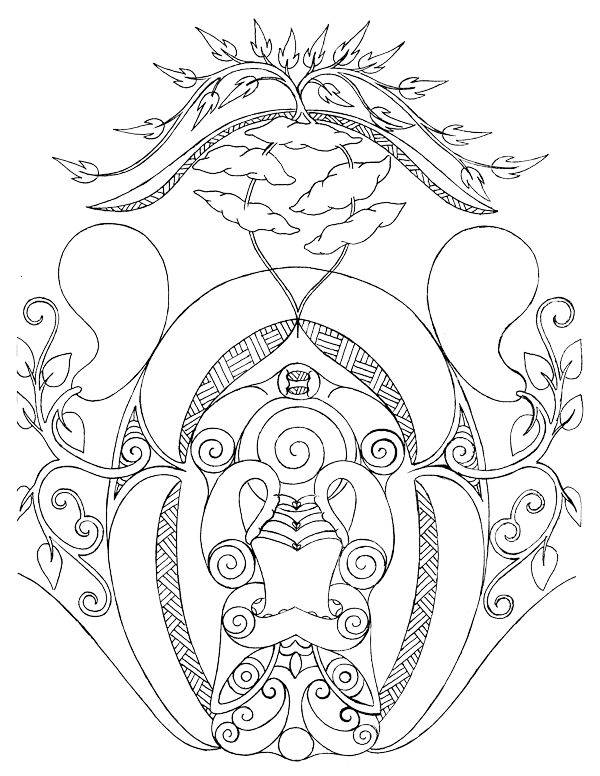
Rongomātāne with qualities of peacefulness, and order, provision and cultivation
When Waikato Enviroschools facilitator Adrienne Grant, saw a post about the Enviroschools National team home vision mapping exercise she realised the potential to encourage families in the Waikato Region to do something similar, adapting the existing mapping activities in the Enviroschools kit for use by whānau bubbles. Ruairi Kelly, also an Enviroschools facilitator for the Waikato team suggested that he could model the activity with his family, to observe and reflect on the effectiveness. Vicky Kelly has been involved in Environmental education for many years (including gaining her Permaculture design certificate) and her main focus is currently community facilitation. What a great way to develop good practice!
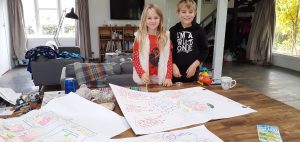
Kelly family Visioning Process
Observing, designing and feedback are a really important part of the permaculture toolkit – it’s something that we have used in personal, property and business matters, however this time it was a bit different. With the guidance of Waikato Enviroschools, we let the kids have a go! Let’s see their thoughts (after all they make half of our family – a really important half)! So, we guided and they inputted. With Ori and Ani, being only 8 and 6, this could have been a task of torturous ‘how do we spell so and so’, so I did the writing so that they were able to get their thoughts out.
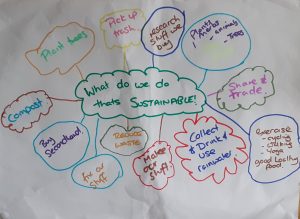 We started by doing a reflection: ‘what do we do that’s sustainable’ – resulting in a big thought spurt on to a sheet of paper. This was followed by looking at where we live (and let’s face it, they have not seen anywhere else much recently). We are lucky we have an acre, but there are still places they don’t go on the property, so we used the guiding questions from the activity sheet (see MiME Mapping my Place) and looked at why? One of the activities we did explores their feelings behind these places: were they noisy, fun, scary? Another looks at how we used different spaces.
We started by doing a reflection: ‘what do we do that’s sustainable’ – resulting in a big thought spurt on to a sheet of paper. This was followed by looking at where we live (and let’s face it, they have not seen anywhere else much recently). We are lucky we have an acre, but there are still places they don’t go on the property, so we used the guiding questions from the activity sheet (see MiME Mapping my Place) and looked at why? One of the activities we did explores their feelings behind these places: were they noisy, fun, scary? Another looks at how we used different spaces.
Then we got to the exciting bit – planning for what we would like to do in our space, land, for our health, how we consume and dispose of that consumption and other stuff in the future. Some hard things came up – it was tricky moving from ‘things’ that they ‘wanted’ to a broader idea of how they wanted to ‘be’ and ‘feel’ and what could help them achieve these. This was the only point that Ruairi helped guide the questions. Focusing on the big ideas, what came out were things like thinking before we buy, fixing before we throw, and fun things like making window boxes for their rooms. They are habitual vege garden grazers and so they want the action closer. Most of all they want to experience our country and natural world a lot more. How lucky we are to live in a country where we have so much of that!
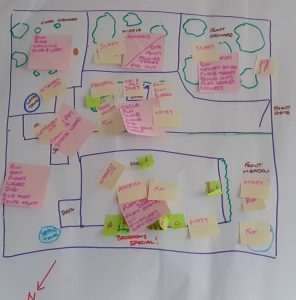
Mapping Our Place at Thackrays Hall
The kids enjoyed the process, and the guiding questions helped to keep the ideas within the task. The original task needed to be broken down into three distinct sessions with good breaks in between. The recording of the kids’ thoughts was essential to bring them back to the larger concepts.
So, in the end they decided they want to buy less and to get out more!!! How that happens is yet to be formulated – another brain splat session again, when we can move forward and interact again physically and not just virtually.
In the meantime, we will take stock, enjoy, annoy, and love each other until we can be physically in our extended community and family again.
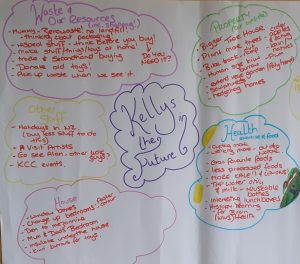
Kelly Family Visioning Rāhui April 2020